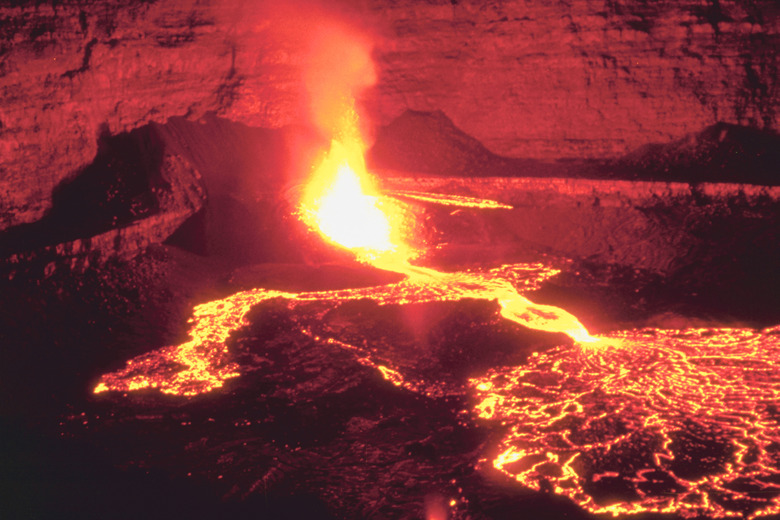What Happens To Lava After Erupting From A Volcano?
Lava flow from erupting volcanoes is among the most iconic natural disaster images. The erupting molten rock flows out and down the sides of the volcano crater destroying anything in its path, creating various formations both in its flow and as it cools. Lava formations are responsible for a lot of the landscaping and rock composition in a volcanic area.
Flow
Flow
The molten lava flow is destructive as it flows out of the volcano crater, burning and clearing its way. The heat of the molten rock destroys anything with a lower melting point or that is flammable, which is why you find less life on active volcano areas, with few plants surviving lava flows and the accompanying gas clouds.
Rock Formation
Rock Formation
Igneous rocks are formed when the molten magma cools. The cooled volcanic rock is often glassy in texture; the inside of the rock can be affected by how much gas escapes during the eruption. An example of this is pumice, which has a vesicular texture caused by escaping gas during an explosive eruption. This type of volcanic rock can be so light it can actually float on water.
Landscape Formation
Landscape Formation
The area around volcanoes and tectonic plate edges is characterized by a great deal of formations left behind by lava flows. Examples of this are lava cascades where lava has flowed over a cliff, and lava channels, which are similar to river formations and may include levees and islands. Lava lakes are formed by collecting lava in a crater and lava drapes by cooled lava cascades. Timulis are domed-shaped structures formed by slow flowing lava on a flat slope welling up to create a brittle crust.
Lava Tubes
Lava Tubes
Lava tubes form when basaltic lava cools and crystallizes around the edges forming a tunnel through which molten lava can still flow. These tubes are usually smaller than three-quarters of a mile long, although they have been known to be longer. Inactive lava tubes often have lava stalactites hanging from the ceiling where the dripping lava has cooled. Often the lava tubes can remain undetected, buried beneath cooling lava.
Cite This Article
MLA
Slingo, Mark. "What Happens To Lava After Erupting From A Volcano?" sciencing.com, https://www.sciencing.com/happens-lava-after-erupting-volcano-8764829/. 24 April 2017.
APA
Slingo, Mark. (2017, April 24). What Happens To Lava After Erupting From A Volcano?. sciencing.com. Retrieved from https://www.sciencing.com/happens-lava-after-erupting-volcano-8764829/
Chicago
Slingo, Mark. What Happens To Lava After Erupting From A Volcano? last modified March 24, 2022. https://www.sciencing.com/happens-lava-after-erupting-volcano-8764829/
